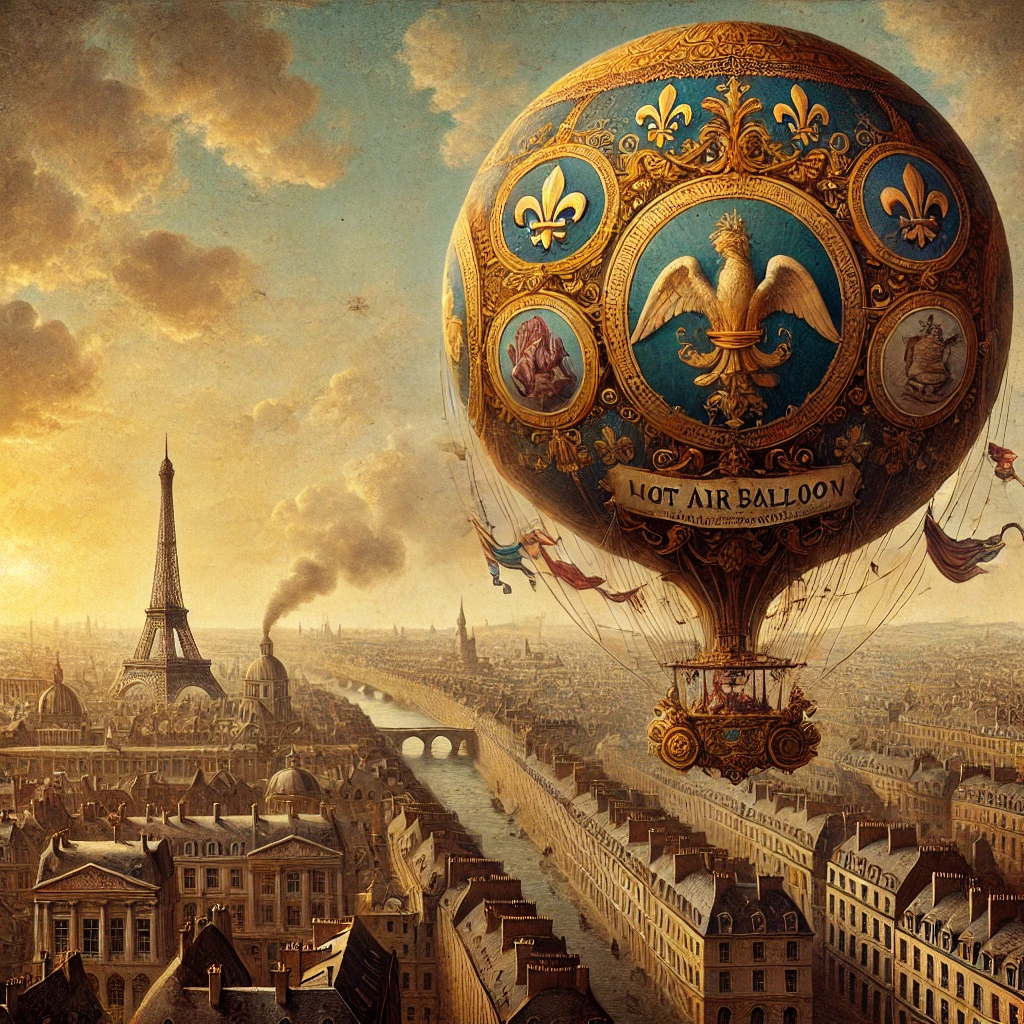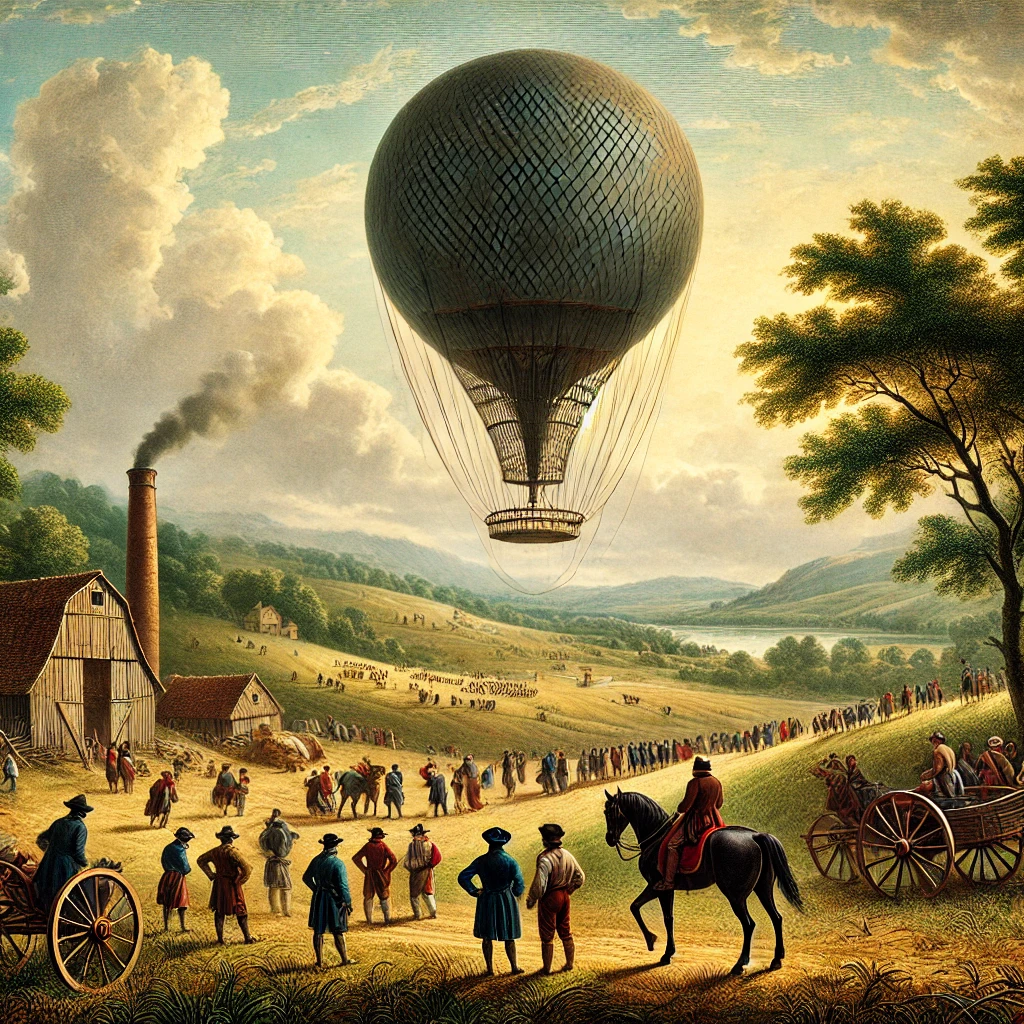On November 21, 1783, history was made in Paris, France, as humans took to the skies for the first time in a hot air balloon. Piloted by Jean-François Pilâtre de Rozier and François Laurent d’Arlandes, this groundbreaking flight marked humanity’s first step toward conquering the air. The balloon, crafted by the Montgolfier brothers, was made of silk and paper and powered by a fire that produced hot air, enabling it to rise.
Lifting off from the gardens of the Château de la Muette, the balloon soared to an estimated height of 500 to 3,000 feet, traveling approximately 5.5 miles across the city. The flight lasted about 25 minutes, proving that controlled, sustained human flight was not just a dream but a reality. It was a moment of awe and inspiration, watched by an enthusiastic crowd that included the French royal family.

A Technological and Cultural Milestone
The successful ascent in a hot air balloon symbolized a new era of innovation during the Enlightenment. At a time when scientific inquiry and technological progress were reshaping societies, this achievement captured the spirit of human curiosity and determination. It demonstrated that through ingenuity, humanity could overcome natural limitations and explore uncharted realms.
The Montgolfier brothers and the pilots faced considerable skepticism from those who doubted the safety and feasibility of their venture. However, their success silenced critics and inspired further experimentation in aviation. The hot air balloon became a symbol of possibility, spurring inventors and adventurers to dream of even greater accomplishments in flight.

A Lasting Legacy in Modern Aviation

The first successful ascent in 1783 laid the foundation for the aviation industry as we know it today. Although hot air balloons were initially used for recreation and spectacle, their utility expanded into military reconnaissance and scientific exploration in the 19th century. Over time, the principles behind balloon flight informed the development of advanced aircraft, including airplanes and spacecraft.
Today, hot air ballooning remains a popular recreational activity, connecting people with the wonder of flight in a serene and scenic manner. More importantly, the event is celebrated as a pivotal moment in human history that exemplifies the power of creativity, courage, and collaboration.
As we marvel at the technological advancements that enable modern air travel, the first ascent of Pilâtre de Rozier and d’Arlandes reminds us of the humble yet extraordinary beginnings of human flight. November 21, 1783, will forever be a testament to the pioneering spirit that propels us into the future.
